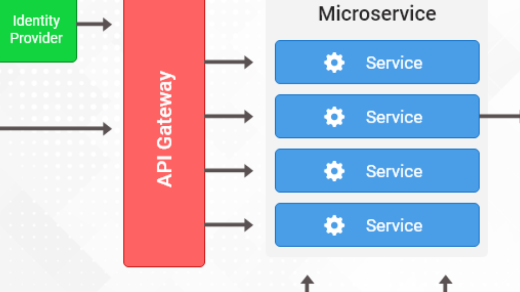Welcome to the world of PyTorch, where the journey of deep learning begins! In this beginner’s tutorial, we will unveil the secrets of PyTorch, empowering you to dive into the fascinating world of neural networks and unleash your coding prowess. So fasten your seatbelts and get ready to embark on an exhilarating adventure of PyTorch mastery!
Introduction to PyTorch

PyTorch is a powerful deep learning framework that is widely used in the field of artificial intelligence. It provides a flexible and efficient way to build and train neural networks for various tasks such as image classification, natural language processing, and speech recognition.
One of the key advantages of PyTorch is its integration with CUDA, a parallel computing platform and API that allows for efficient execution of computations on graphics processing units (GPUs). This enables PyTorch to leverage the computational power of GPUs to accelerate training and inference processes.
PyTorch also supports automatic differentiation, a mathematical technique used in backpropagation to compute gradients and update the parameters of a neural network. This makes it easier to implement complex models and optimize them using gradient-based optimization algorithms such as gradient descent.
The main building block in PyTorch is the tensor, which is a multi-dimensional array that can represent both scalar values and higher-dimensional data. Tensors can be manipulated using a wide range of mathematical operations, similar to NumPy arrays.
To visualize data and results, PyTorch provides integration with popular plotting libraries such as Matplotlib. This allows for the creation of informative and visually appealing graphs and charts.
PyTorch also provides a user-friendly interface for interactive programming and experimentation through Project Jupyter notebooks. This allows users to write and execute code in a convenient and organized manner, making it easier to understand and debug complex models.
In this beginner’s PyTorch tutorial, we will cover the basics of PyTorch, including tensor operations, automatic differentiation, and training a simple neural network. We will also explore common techniques used in deep learning, such as forward pass computation, learning rate adjustment, and statistical classification.
By the end of this tutorial, you will have a solid understanding of the fundamental concepts and tools in PyTorch, and be ready to dive deeper into the world of deep learning and computational science.
To get started with PyTorch, make sure you have it installed on your system. You can find installation instructions and the latest version of PyTorch on the official PyTorch website or on GitHub. Once installed, you can start exploring PyTorch and its capabilities through the provided examples and documentation.
So let’s begin our journey into the world of PyTorch and unlock the potential of deep learning!
Working with Tensors and Autograd
Tensors and autograd are fundamental concepts in PyTorch that you need to understand in order to work effectively with the framework. Tensors are the main data structure in PyTorch, similar to arrays in NumPy but with additional capabilities. Autograd, short for automatic differentiation, is the engine behind PyTorch’s ability to automatically compute gradients for backpropagation.
When working with tensors in PyTorch, you can think of them as multidimensional arrays that can be manipulated using various mathematical operations. Tensors can be created from Python lists, NumPy arrays, or even directly from data stored on a GPU using CUDA. They can represent a wide range of data, from simple scalars to complex data structures like matrices and higher-dimensional arrays.
Autograd is PyTorch’s automatic differentiation engine, which allows you to compute gradients of tensors with respect to other tensors. This is particularly useful in machine learning, where backpropagation is a key step in training artificial neural networks. Autograd keeps track of all the operations performed on tensors and their dependencies, allowing you to easily compute gradients using the chain rule of calculus.
To use autograd, you simply need to set the `requires_grad` attribute of a tensor to `True`. This tells PyTorch to track all operations on that tensor and enable gradient computation. You can then perform forward passes through your neural network, compute the loss function, and call the `backward()` method to compute the gradients. These gradients can then be used to update the weights of your neural network using optimization algorithms like gradient descent.
PyTorch also provides a wide range of mathematical functions and operations that you can perform on tensors. These include basic arithmetic operations like addition, subtraction, multiplication, and division, as well as more advanced functions like sine, cosine, and matrix operations. You can also manipulate the dimensions of tensors, transpose them, and perform other operations to reshape your data.
When working with PyTorch, it is common to use Project Jupyter notebooks to write and execute your code. Notebooks provide an interactive environment where you can write and run code, visualize data using tools like Matplotlib, and document your work. PyTorch integrates seamlessly with Jupyter notebooks, allowing you to easily experiment with different models and algorithms.
Exploring the nn Module

The nn module in PyTorch is a fundamental component for building and training artificial neural networks. It provides a wide range of pre-defined functions and classes that make it easier to create and train neural networks efficiently.
One of the key advantages of using the nn module is that it abstracts away the lower-level details of implementing neural networks, allowing you to focus on the high-level concepts and architecture. It provides a simple and intuitive interface to define and configure your neural network layers, activation functions, and loss functions.
The nn module also takes advantage of the power of modern graphics processing units (GPUs) to accelerate the computations involved in training neural networks. By utilizing GPUs, you can greatly speed up the training process and handle larger datasets.
To get started with the nn module, you need to have a basic understanding of mathematics, including concepts like sine and cosine, derivatives, and functions. You should also be familiar with programming concepts like parameters and floating-point arithmetic.
In PyTorch, neural networks are typically represented as a sequence of layers. Each layer performs a specific computation on the input data, such as matrix multiplication or applying a non-linear activation function. The nn module provides various types of layers, such as linear layers, convolutional layers, and recurrent layers, which you can combine to create complex neural network architectures.
During training, the nn module handles the forward pass, where input data is passed through the network to produce predictions, and the backward pass, where the gradients of the network’s parameters are computed using techniques like backpropagation. These gradients are then used to update the parameters in order to minimize the loss function.
To use the nn module, you need to import it from the torch library. You can then create an instance of a neural network class and define its architecture by adding layers to it. Once the network is defined, you can train it using techniques like stochastic gradient descent and adjust the learning rate to optimize the training process.
Running and Utilizing the Tutorial Code
Once you have gone through the beginner’s PyTorch tutorial and familiarized yourself with the basics, it’s time to put that knowledge into practice by running and utilizing the tutorial code. This hands-on experience will help solidify your understanding and give you the opportunity to experiment with different concepts and techniques.
To begin, make sure you have PyTorch installed on your machine. You can easily do this by following the installation instructions provided in the tutorial. Once PyTorch is successfully installed, you can start running the tutorial code.
The tutorial code is typically provided in the form of Jupyter notebooks, which are interactive documents that allow you to combine code, text, and visualizations. These notebooks are a great way to learn and experiment with PyTorch, as they provide a step-by-step guide and allow you to modify the code to see the effects of your changes.
To run the tutorial code, simply open the Jupyter notebook in your preferred environment. This could be JupyterLab, Jupyter Notebook, or any other environment that supports Jupyter notebooks. Once the notebook is open, you can execute each cell of code by pressing Shift+Enter. This will run the code and display the output, if any.
As you go through the tutorial code, take the time to understand each line and the purpose it serves. This will help you grasp the underlying concepts and make it easier to modify the code to suit your needs in the future. If you encounter any errors or have trouble understanding certain parts of the code, refer back to the tutorial or consult the PyTorch documentation for further guidance.
Utilizing the tutorial code involves more than just running it. It’s about experimenting with different parameters, data, and models to gain a deeper understanding of how PyTorch works. Try tweaking the code to see how it affects the output or performance. Explore different datasets and models to see how they perform in different scenarios. This hands-on approach will help you develop your skills and intuition in using PyTorch for various tasks.
In addition to running and modifying the tutorial code, you can also explore additional resources and examples available on platforms like GitHub. These resources provide a wealth of knowledge and practical examples that can further enhance your learning experience.



